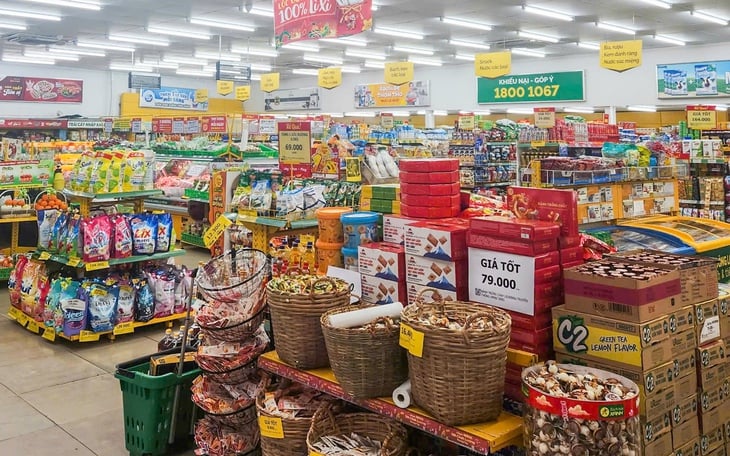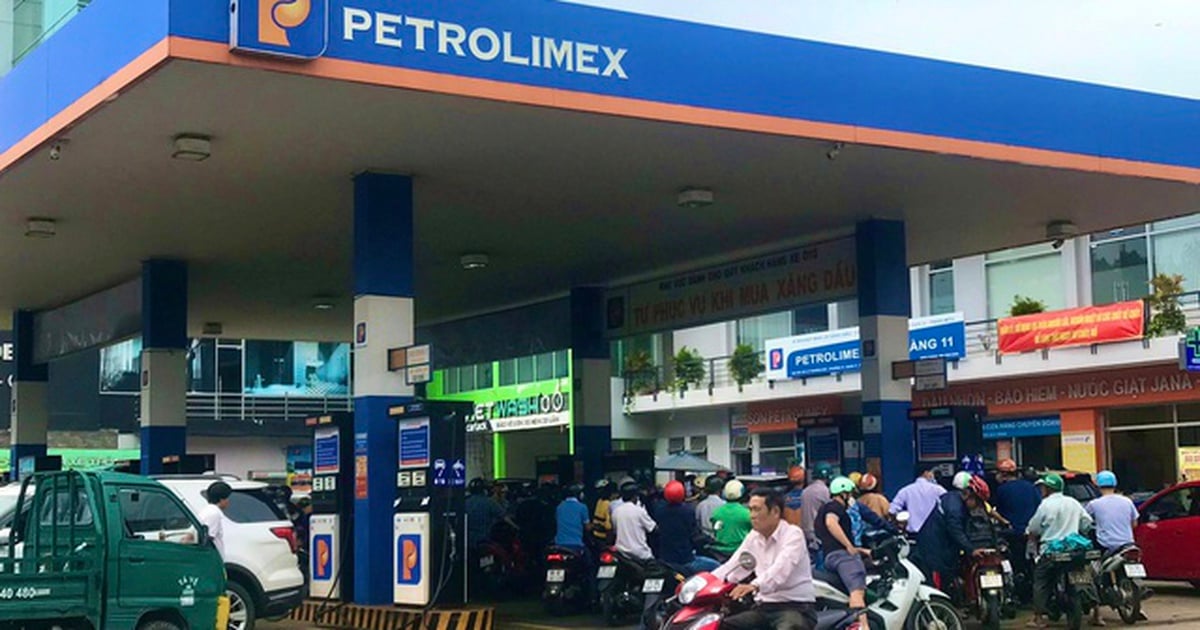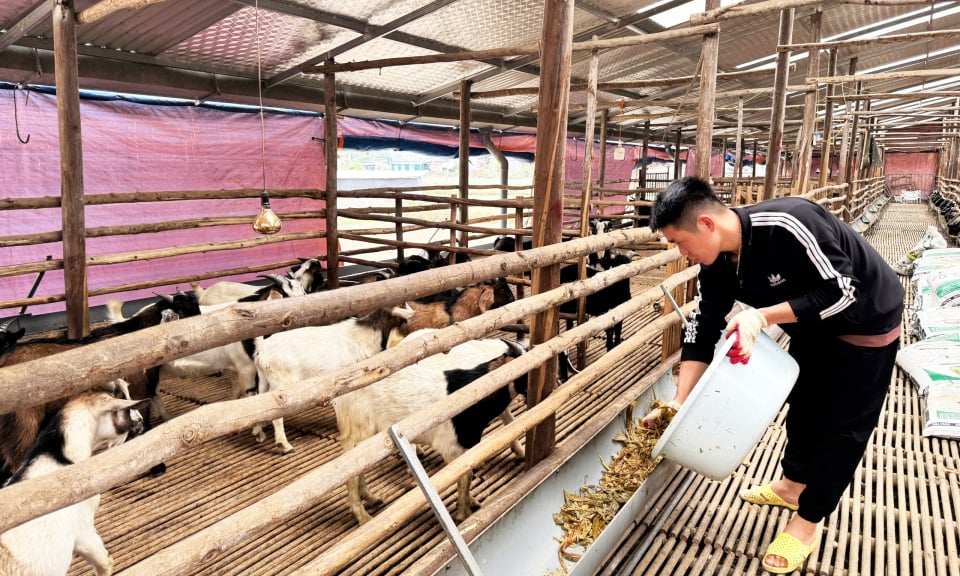
Goods displayed in a food retail store in Binh Tan district, Ho Chi Minh City - Photo: HONG PHUC
Tran Duy Trinh, 25 years old, who studied mechatronics engineering in Hanoi, is a name that has attracted attention in the online community recently, when he chose to return to Thanh Hoa to support his family in managing a grocery store and in charge of communications for a tea bag business.
"Grandparents" young boss in the countryside
Trinh once won first prize in a general knowledge contest for high school students in Thanh Hoa province, a local version of the Road to Olympia. When she decided to return to her hometown to start a business, Trinh believed that the countryside was opening up many new opportunities, where small shops could still operate effectively with gradually more modern management.
Trinh believes that currently, businesses in the countryside are gradually shifting to digital platforms, opening up many opportunities for young people who know how to seize them.
Observations by experts at the Center for Business Research and Enterprise Support (BSA) also show that more and more minimarts are appearing in communes and towns.
These stores are often run by young people who do not see selling as a leisurely job, but as a serious career and lead the trend of selling in rural areas.
"They, and no one else, have been contributing to changing the face of the countryside," a market expert at BSA shared.
However, according to this person, the competitive challenge will lie in the fact that more and more foreign-invested enterprises have been searching for and serving "extremely attentively" the rural customer group. When observing carefully on the shelves, the proportion of pure Vietnamese goods in mini supermarkets in the countryside is much less than in regular stores.
This poses a challenge for Vietnamese businesses: be careful not to be slow in competing for market share in suburban and rural areas when a new type of distribution (mini-supermarkets) is starting to develop.
Technology creeps into grocery stores
According to Ms. Nguyen Phuong Nga, senior business director at Kantar Worldpanel Vietnam, e-commerce is growing strongly and becoming a big boost for many industries, especially in rural areas, where the majority of Vietnam's population lives.
Thanks to the popularity of digital platforms, people in rural areas can now shop easily with just a click or buy goods after watching livestreams from nearby grocery stores. E-commerce brings convenience not only to consumers but also to local merchants.
In 2024, in the fast-moving consumer goods (FMCG) industry in rural areas, even though income is only 60-70% of that in the city, up to 42% of households, equivalent to 17 million households, will still choose to shop online.
However, lower income in rural areas leads to lower affordability than in the city and limited product evaluation skills, causing low-quality or "floating" goods to still be consumed through word of mouth.
In addition, Ms. Nga gave a noteworthy warning to the business community that increasing e-commerce channel sales does not mean that the industry or brand is actually growing.
In many cases, consumers are simply shifting their spending from traditional and modern channels to online, mainly for reasons of convenience or low cost.
"In the food and beverage and personal care and home care industries, of every 100 VND of additional online channel revenue, more than 50 VND comes from shifting from other channels," said Ms. Nga.
This poses a channel conflict problem for businesses as they seek to manage a multi-channel distribution strategy without reducing the effectiveness of existing channels.
Traditional channels still hold the dominant position
Ms. Phuong Nga commented that although online and minimarts are developing rapidly, grocery stores still play the "backbone" role in the distribution system.
Specifically, according to forecasts, by 2026 in four major cities, online channels will account for about 14% of FMCG industry sales, while grocery stores will still hold 47%.
In rural areas alone, this rate is even up to 72%, affirming the irreplaceable position of the network of grocery stores, the force that maintains the rhythm of goods for domestic consumption.
Source: https://tuoitre.vn/thuong-mai-dien-tu-dang-len-loi-manh-me-o-nong-thon-20250413063939491.htm


![[Photo] Hanoi people warmly welcome Chinese General Secretary and President Xi Jinping on his State visit to Vietnam](https://vstatic.vietnam.vn/vietnam/resource/IMAGE/2025/4/14/d6ac6588b9324603b1c48a9df14d620c)
![[Photo] Prime Minister Pham Minh Chinh chairs conference to review the implementation of Resolution No. 18-NQ/TW](https://vstatic.vietnam.vn/vietnam/resource/IMAGE/2025/4/14/dcdb99e706e9448fb3fe81fec9cde410)
![[Photo] General Secretary To Lam holds talks with General Secretary and President of China Xi Jinping](https://vstatic.vietnam.vn/vietnam/resource/IMAGE/2025/4/14/b3d07714dc6b4831833b48e0385d75c1)


![[Photo] Ceremony to welcome General Secretary and President of China Xi Jinping on State visit to Vietnam](https://vstatic.vietnam.vn/vietnam/resource/IMAGE/2025/4/14/5318f8c5aa8540d28a5a65b0a1f70959)













































































Comment (0)